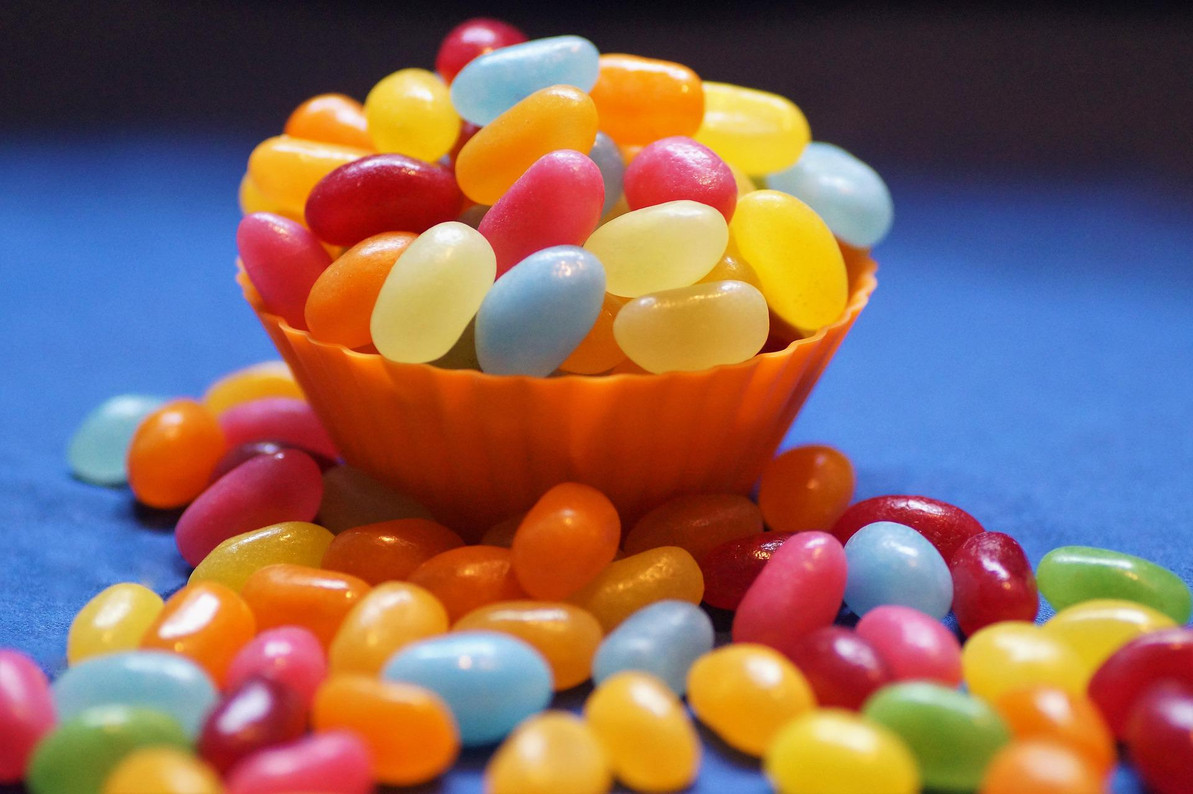A Brief History of Jelly Beans
Who doesn’t love a good jelly bean? Jelly beans are a fun, chewy, and fruity candy. Almost everyone loves them, but very few people know their history.
The Family History of Jelly Beans
The origin of the jelly bean dates back more than 500 years ago to Greece. Others date the origins to early Rome and Biblical times.
Turkish delight is the closest known confectionary relation to the jelly bean. Turkish delight originally consisted of jellied sugar-coated-in powdered sugar. Turkish delight evolved into the gumdrop, which consisted of a jellied centre with a granulated sugar coating.
Some believe that a combination of Turkish delight and Jordon Almonds resulted in gumdrops. Jordan Almonds date to early Rome and consisted of an almond centre coated in granulated sugar.
The gumdrop formed into the jelly bean once candy makers developed panning. Panning is what gives the jelly bean it's smooth coating of melted sugar and syrup.
Initially, only the wealthy could afford this sweet treat. These candies became available to everyone only after the mass production of sugar.
More Recent History of Jelly Beans
The jelly bean became a popular replacement for chocolate candy when soldiers had chocolate included with their rations during wartime.
Confectionary William Schrafft later developed the jelly bean into small bean-shaped candies in the late 1800s. They became highly affordable and popular as penny candies. Mr. Schrafft also encouraged consumers to send jelly beans to soldiers fighting wars.
The jelly bean rose in popularity during the 1930s as it became a favoured Easter candy. Based on their shape, jelly beans were an easy, flavourful, and colourful addition to the yearly Easter basket.
U.S President Ronald Reagan declared his love for jelly beans in the 1960s, and the jelly bean saw another rise in popularity. Historians say that President Reagan used jelly beans to stop his smoking habit. He was such a fan that he requested the creation of a blue jelly bean so that he could make red, white, and blue jelly beans available in the presidential White House.
Jelly beans rose to such popularity that industry fans studied the psychology behind eating and enjoying them. The study found that boys and girls tend to eat jelly beans differently, with boys eating them by the handful and girls eating them individually. The study also showed that adults loved them as much as children and that most consumers preferred to eat them in the same colour order: red, purple, green, yellow, and blue.
The Jelly Bean Today
Sugar, corn syrup, and starch are the primary ingredients in today’s simple jelly bean. In addition, there are gourmet jelly beans, jelly beans with natural fruit flavours, and jelly beans with artificial flavouring.
Today, the jelly bean business is a multi-billion-dollar industry, with consumers eating upwards of 15 billion jelly beans each Easter season alone. So, the next time the craving hits, grab a handful of your favourite jelly beans and share the history of jelly beans with another fan.
Still have a sweet tooth? Visit The Lolli Shop or call us at 4599-9167 to explore our collection of sweets!
Recent Posts
-
Pop Tarts: Did You Know?
Pop Tarts are not only one of a few popular American Snacks bought online, but are arguably one t …26th Aug 2022 -
A Few Surprising (but True) Facts About Cheetos
Ah, Cheetos. Do you know that one snack that after grabbing a few pieces, its rich coating of c …12th Aug 2022 -
All You Need To Know About Hershey's Chocolate
The Central Americans enjoyed chocolate centuries ago. Then, the Spanish brought the sweet treat to …27th Jul 2022




